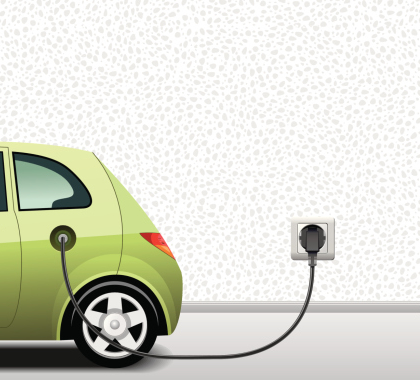Declining support for policies promoting electric vehicles (EVs), and a slowdown in EV sales, could reinvigorate global oil markets, concludes a recent report by a Washington, D.C.-based firm specializing in global energy forecasts.
The United States and China are the world’s largest EV markets. Prior expectations that sales of EVs would continue to expand led some observers to forecast a global peak and then decline in oil demand for transportation in the near future.
By contrast, Rapidan Energy Group’s updated “Decarbonization Policy Tracker” notes EV demand is falling as government support for the vehicles, including mandates and subsidies, has waned, which could at the very least delay any decline in global oil demand.
Rapidan says it expects the U.S. Energy Information Administration (EIA) and the International Energy Agency (IEA) to revise their projections for global oil demand upward once they account for declining EV sales.
‘Peak and Plateau’ Scenario
Rapidan’s report states the EIA is already adjusting its monthly gasoline forecasts, shifting them to a “peak-and-plateau” from a “peak-and-collapse” forecast it had issued every year since 2008.
EIA made similar peak-and-collapse projections in the 1980s, but the collapse never happened. After the fracking revolution opened access to millions of new barrels of oil reserves the industry had previously been unable to capture, oil prices fell even as the U.S. economy expanded and further boosted demand for fuel.
“We see history repeating,” the report says, with the slowdown in demand for EVs, due to declining government support and changes in consumer tastes, moving the needle on expected global oil demand upwards once again.
China’s EV Drawdown
Recent developments in China don’t bode well for EV sales, Rapidan states.
China has 487 domestic EV manufacturers, all of them subsidized, and many of them are losing money despite the infusions of taxpayer cash.
Rapidan’s report notes fraud is rampant throughout the Chinese EV market. In some cases, fossil fuel powered vehicles have been labeled as EVs to obtain subsidies. In other instances, EVs have been built without any batteries, just so the manufacturers could receive government credit for building the vehicles. It is not uncommon for Chinese EVs to be mislabeled to overstate their range of travel between charges.
In response to these and other problems, plus a slowing economy, the government in Beijing announced it will cut purchase subsidies for EVs by 50 percent in late 2019 and phase them out completely in 2020. Beijing is urging local governments to reduce EV incentives as well.
Rapidan also says an overhaul the Chinese government is undertaking to its unique vehicle licensing procedures will benefit gasoline and diesel-powered vehicles and discourage EV sales.
Exiting laws impose barriers to or limits on the registration of vehicles with internal combustion engines. These restrictions benefit the sale of EVs. The Chinese government announced it was lifting restrictions on the registration of vehicles with internal-combustion engines earlier in 2019.
A 2018 study by the Beijing Institute for Technology found license plate availability is the primary driver of EV demand in China, accounting for 45 percent to 65 percent of purchases.
Lower U.S. EV Support
Rapidan’s report says the Trump administration’s freeze on fuel-efficiency standards and its decision to revoke California’s waiver to set its own fuel efficiency standards will slow the U.S. EV market.
Withdrawing the waiver will jeopardize California’s Zero Emissions Vehicle program, which it and nine other states have used to require a certain percentage of vehicles sold in their states be EVs.
In addition, a tax credit ranging from $2,500 to $7,500 the federal government offers to purchasers of EVs based on range of travel and battery size begins to phase out for each manufacturer after it reaches 200,000 EVs sold.
Financially troubled Tesla has already crossed that threshold, and the subsidy that purchasers of its vehicles receive has been cut in half to $3,750. The subsidy is set to drop to $1,875 at the end of 2019 before disappearing altogether by the end of 2020.
Lobbyists for auto companies heavily invested in EVs are urging Congress to extend the $7,500 subsidy, fearing loss of consumer interest once the rebate is gone.
Running on Subsidies
Without government support, the market for electric vehicles would be nearly nonexistent, says Dan Kish, a distinguished senior fellow at the Institute for Energy Research
“The secret to EVs is they don’t run on batteries, they run on subsidies,” said Kish. “The vehicles people want to buy run on oil, and the good thing about that is there’s plenty of it to go around in both the United States and the world.
“If oil didn’t exist as a transportation fuel, we’d have to invent it,” Kish said.
Efforts to make EVs the dominant type of personal vehicle were always bound to fail, says David Wojick, a senior policy analyst with the Committee for a Constructive Tomorrow.
“EVs are simply not ready for widespread use in America,” said Wojick “Proposals to ban the internal combustion engine and make EVs common are completely unrealistic, and the Energy Information Administration clearly knows this.”
Bonner R. Cohen, Ph.D. ([email protected]) is a senior fellow at the National Center for Public Policy Research and a senior policy analyst CFACT.





